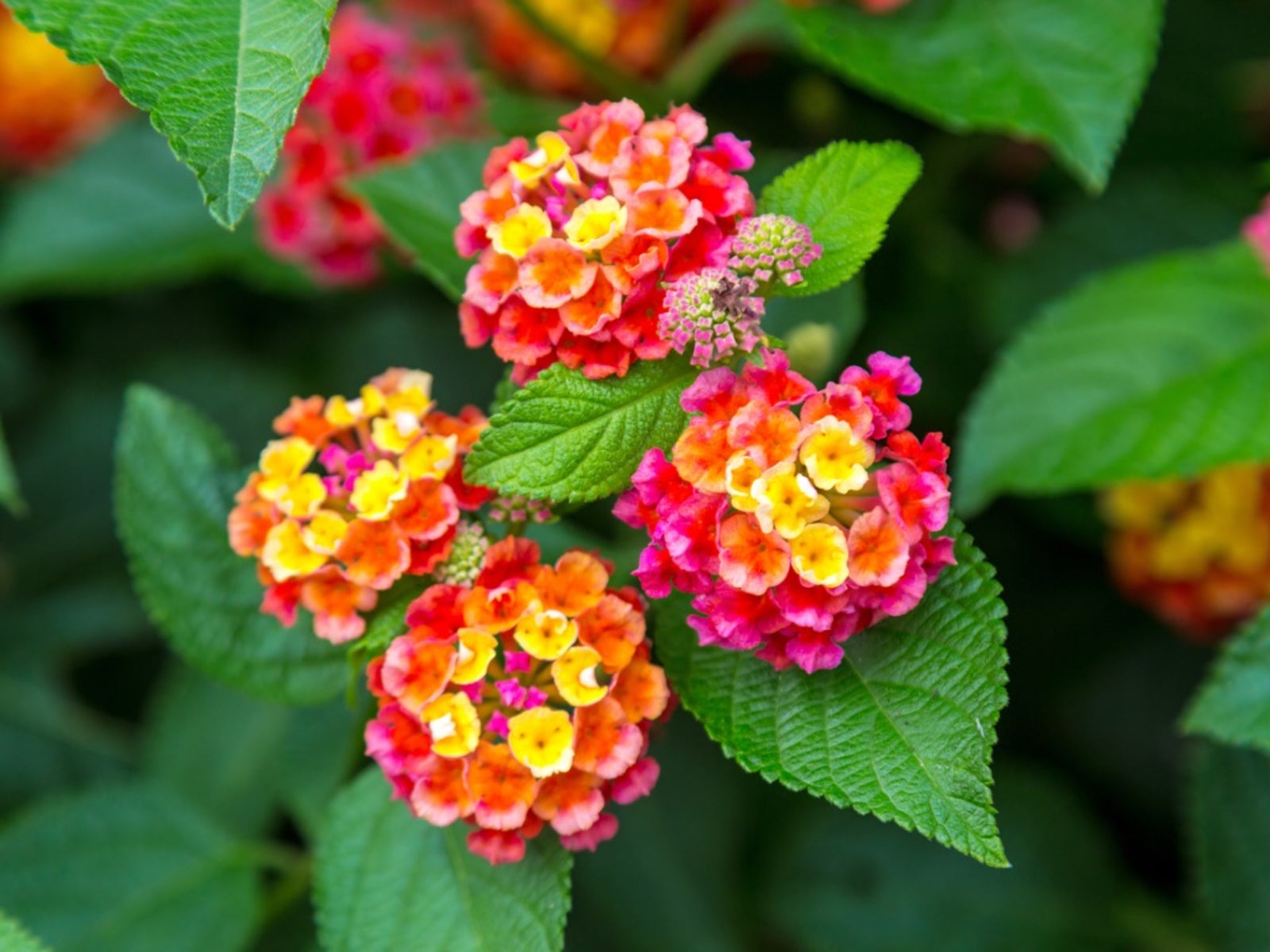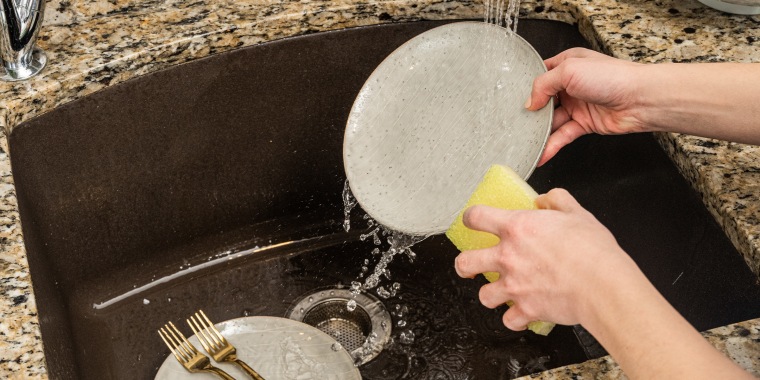How To Grow And Care For Lantana
Lantana is an incredibly versatile and vibrant flowering shrub that makes a great addition to any garden. It can be grown in a variety of ways, from containers to ground covers, and requires very little maintenance. With its bright and showy blooms, it adds a splash of color to any landscape. With the proper care, lantana can thrive in gardens of all sizes. This guide will provide information on how to properly grow and care for lantana, including how to select the right variety, when to plant, fertilizing, pruning, and more.
Types of Lantana
Lantana is a genus of flowering plants in the verbena family, Verbenaceae. It is native to tropical regions of the Americas and Africa but has become naturalized in many other areas. There are many types of lantana, each with their own unique colors and growth habits. Some of the common types of lantana include the trailing lantana, the shrub lantana, and the upright lantana.
Trailing lantana, also known as creeping lantana, is a low-growing perennial with a sprawling, cascading habit. It has small, fragrant, purple and yellow flowers and is perfect for hanging baskets and container gardens. Shrub lantana is a fast-growing, upright evergreen shrub with bright, colorful flowers that attract butterflies and hummingbirds. It is ideal for hedges and borders. Upright lantana is a tall, vase-shaped, upright shrub with deep green leaves and fragrant, multi-colored flowers. It is perfect for adding height and interest to garden beds and borders.
No matter which type of lantana you choose, they all require similar care. They need full sun, well-draining soil, and regular irrigation. Pruning is also necessary for lantana to promote healthy, bushy growth. Fertilizer can be added to encourage blooming and vigorous growth. With proper care, lantana will bloom from spring until frost and fill your garden with beauty.
Planting and Positioning
When it comes to planting and positioning lantana, you have a few options. Lantana is a relatively hardy plant and can thrive in a variety of climates, soils, and conditions. It is best to plant lantana in well-drained, nutrient-rich soil with a slightly acidic pH. If planted in containers, be sure to use a good quality potting soil. When planting lantana in a garden, it is important to choose a spot that gets at least six hours of direct sunlight each day. When planting in containers, be sure to move them to a spot that gets plenty of sunlight as well. Lantana is also very tolerant of drought and heat, and can be planted in an area that will provide ample air circulation. Lastly, it is important to leave enough space between plants to prevent overcrowding.
When caring for lantana, it is important to remember to water it regularly, especially during dry spells. Lantana is not particularly picky when it comes to fertilizer, but a light application of general-purpose fertilizer once a month is recommended. Pruning is also important to ensure the plant gets enough air circulation to prevent disease. Lastly, it is important to keep an eye out for pests and diseases, as lantana can be susceptible to both. With a little care and attention, lantana can be a beautiful addition to your garden for years to come.
Watering and Fertilizing
Caring for lantana involves providing the right amount of water and fertilizer. Without proper watering and fertilizing, lantana plants can become stressed, reducing their flowering and foliage. To ensure optimal growth, water your lantana regularly and fertilize it with a balanced fertilizer at least once a month.
When it comes to watering, lantana needs about 1 to 1.5 inches of water a week. Be sure to water the plants deeply and evenly, focusing on the soil, not the leaves. If your plants are in containers, water until you see the water come out of the drainage holes. During dry periods, you may need to water more often.
Fertilizing your lantana is also essential. The best type of fertilizer to use is one that is balanced, such as an 8-8-8 or 10-10-10. Apply the fertilizer once a month during the growing season, following the instructions on the product label. Be sure not to over-fertilize, as this can burn the roots and damage the plant.
Taking the time to water and fertilize your lantana plants will ensure that they stay healthy and productive. With the right care, you can enjoy beautiful blooms and lush foliage for many years to come.
Pruning and Deadheading
Pruning and deadheading are two essential steps for keeping lantana thriving and healthy. Pruning encourages new growth and encourages the development of strong stems and branches. Prune lantana in spring or early summer, cutting off any dead, damaged, or weak stems and branches. When pruning, cut back all stems to the desired shape and size. Deadheading is the process of removing spent flowers from the plant. Doing this will encourage new blooms and prevent it from going to seed. Deadhead the flowers as soon as they start to fade, using sharp scissors or pruners to cut the stem just below the flower. This process should be repeated throughout the growing season. Both pruning and deadheading are necessary processes for helping lantana to thrive. Doing both will help to promote healthy and abundant blooms throughout the season.
:max_bytes(150000):strip_icc()/Lantana-14-e6588d1aa938444da84faa69e9eb01a9.jpg)
Pest and Disease Control
Lantana is a hardy and fragrant flowering shrub, commonly found in home gardens. But, like all plants, it can be affected by pests and diseases. To keep your lantana healthy and lush, it’s important to know how to properly care for it and prevent any potential infestations. Proper pest and disease control is essential for keeping your lantana looking its best.
To start, it’s important to inspect your lantana regularly for signs of pests and diseases. Common pests and diseases include aphids, mites, powdery mildew, and rust. If you notice any of these signs, it’s important to take action quickly to prevent further damage.
One way to control pests and diseases is by using a pesticide. Make sure to read the instructions on the label and apply it safely. You can also use natural pest control methods, such as introducing beneficial insects to your garden, using insecticidal soaps, and spraying plants with solutions like neem oil.
Another important part of pest and disease control is ensuring your lantana is getting the right amount of sunlight and water. Make sure to keep the soil moist and avoid overwatering. If the soil is too wet, your lantana can become prone to fungal diseases.
Finally, it’s important to prune your lantana regularly. Regular pruning will help to keep your lantana healthy and ensure it’s growing in the right direction. Pruning will also help to reduce the risk of pests and diseases by removing any unhealthy or dead branches.
By following these steps, you can ensure that your lantana is well cared for and able to thrive. With the right amount of care, your lantana can be a beautiful addition to your garden.
Winter Care
When it comes to winter care for lantana, proper preparation is essential. Even though lantana is a tough and resilient plant, it can suffer from cold temperatures. To ensure that your lantana survives the winter season, it is important to take the necessary precautions.
In colder climates, it is best to bring the lantana indoors or to a sheltered area such as a greenhouse to protect it from the elements. If it is too large to move, you can cover it with a frost cloth or burlap to provide some insulation. Additionally, trim the lantana back to encourage a bushier shape and reduce the amount of exposed foliage.
In milder climates, the lantana may not need protection. If the temperatures dip below freezing, however, it is best to cover the plant with a frost cloth or burlap. Additionally, trim the lantana back to encourage a bushier shape and reduce the amount of exposed foliage.
It is also important to fertilize your lantana before winter arrives. A balanced fertilizer such as 10-10-10 will help the plant maintain its health and vigor during the cold season. Additionally, ensure that the soil is well-draining and provide supplemental water when necessary. With the right preparation and care, your lantana will be ready to bloom in the spring.
Propagating Lantana
Propagating lantana is a great way to multiply your plants and share the beauty with friends and family. The most common method for propagating lantana is by stem cuttings. To do this, select a healthy stem with several leaves and cut just below a node with a sharp, clean knife. Remove about half of the leaves so the cutting can focus on root development. Dip the cut end of the stem into a rooting hormone, and then plant it in a well-draining planting medium. Make sure that the cutting is kept moist but not soggy. If you have a warm, humid environment, you can cover the cutting with a plastic bag to maintain humidity. In a few weeks, the cutting should have established roots and be ready to be transplanted into a larger pot or garden bed. Another method for propagating lantana is by seeds. To do this, scatter the tiny seeds onto the surface of a well-draining soil mix and cover lightly with soil. The seeds should be kept moist and in a warm environment until germination, which should occur within a few weeks. Once the seedlings have emerged, thin the seedlings and transplant the strongest into a larger pot or garden bed. Whichever method you choose, with the right care and attention, propagating lantana can be a rewarding experience.
Common Questions and Answers
It’s no surprise that lantana is one of the most popular flowering plants around. With its cheery blooms and robust growth, it’s easy to see why. But if you’re new to gardening, it’s important to know the basics of growing and caring for lantana. To help you get started, here are some common questions and answers about lantana.
When is the best time to plant lantana? The best time to plant lantana is in spring or fall when the soil is warm and moist. It’s important to wait until the soil temperature is at least 65°F (18°C) before planting.
How much sun does lantana need? Lantana likes full sun and can tolerate partial shade. It prefers at least 6 hours of direct sunlight each day.
How often should I water lantana? During the growing season, lantana should be watered regularly and deeply. A deep watering once a week is usually sufficient. In the winter, water only when the soil is dry.
What fertilizer should I use? A balanced fertilizer like 10-10-10 should be applied every four to six weeks during the growing season.
How can I encourage more blooms? To encourage more blooms, deadhead spent flowers and fertilize regularly. If your lantana is in a sunny spot and receives enough water, it should bloom continuously.
Hopefully, these questions and answers have helped to answer some of your questions about growing and caring for lantana. With the right care and maintenance, your lantana will be blooming in no time.
FAQs About the How To Grow And Care For Lantana
Q1: How much water does a lantana need?
A1: Lantana requires regular watering. During the summer months, water your lantana once or twice a week. During the cooler months, reduce watering to once every two weeks.
Q2: What is the best soil for growing lantana?
A2: Lantana prefers well-draining, sandy soil. If your soil is too heavy, you can add perlite or compost to improve drainage.
Q3: What should I do if my lantana starts to get leggy?
A3: To encourage bushier growth, prune your lantana back. This will stimulate new growth and help keep your lantana looking full and healthy.
Conclusion
Lantana is an easy and rewarding plant to grow and care for. With the right conditions, it can produce beautiful flowers in a variety of colors. It can be grown in containers, in the ground, and even in hanging baskets. The best way to grow lantana is to choose a spot with full sun exposure, well-draining soil, and regular water. Fertilize monthly and prune regularly to keep the plant healthy and looking its best. With the right care, you can enjoy your lantana for many years.






